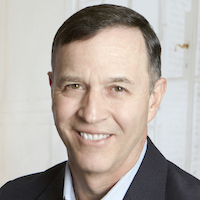When I first heard this phrase, I was working in an R&D group developing electronic DCS. My first interpretation was that until the Sales Department got an order for a new product, new ideas sort of sat on the shelf with low priority… meaning that people were probably working on other tasks. Once an order was received, all hell broke loose trying to get that product out the door; it became Job One! There was the quick cost/benefit analysis to determine if the thing could be made. There was the design team trying to tie-in the latest technology to the product features. There was the rush to get a prototype based on the few requirements that could be ascertained. Above all, there was the schedule which was based on the customer delivery date. All company resources were now dedicated to meeting this schedule. Luckily, your organization doesn’t work in such a haphazard way.
I used to doubt the power of sales; I even loathed sales people to some degree… I suppose that’s the engineer side of me. But selling is not the evil I once thought it to be. The actual sales transaction is probably important to the paycheck of the seller. But the act of selling involves much more. People have choices. People look for value. People search for information to make rational decisions. Armed with the right information, almost any person can sell something… whether that something is a product, an idea, or even themselves.
When I visit clients who are new to functional safety, I often need to become a seller (yes, I now have a Mr. Hyde side!). Those clients are set in their ways to some degree, and they need to see the value proposition to change those ways. On one hand, they want to enter a new market to advance their own sales and profitability. On the other hand, it can be quite an uphill battle to accept new processes to comply with unfamiliar standards. It can be like ‘’Sticker Shock.”
Admittedly, I never again hear from some of those new clients. They’ve picked another path. But for those companies who choose exida and accept the challenges of building safer products, it becomes very rewarding for both of us. And I try to recruit those client contacts to be my sales force within their organizations to help convince the management teams that safety is good for the bottom line. It can streamline the development process rather than hamper it. It helps people do a better job. It can improve product quality, especially for software development, thereby increasing customer satisfaction.
As part of making the world a safer place, I really want to de-mystify the standards so you can see it’s not so bad to use best practices for product development and lower the risks of dangerous failure. Once you have this information, you can determine your path. Come on now… build a better, safer product… I know you want to.
Tagged as: John Yozallinas Functional Safety Certification Functional Safety

